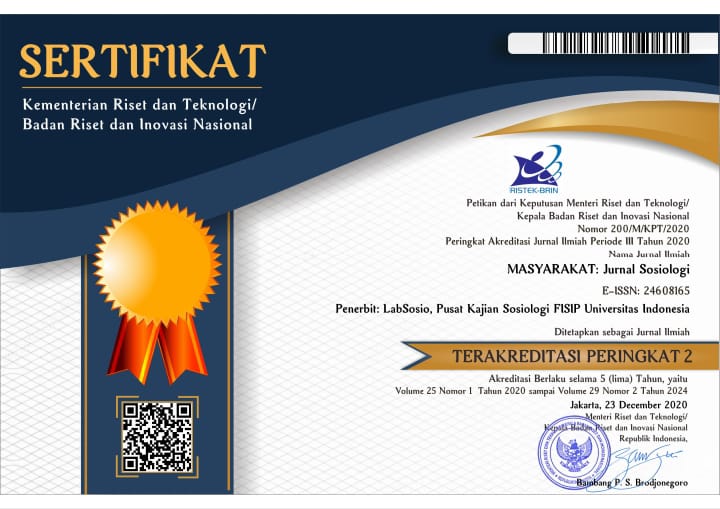Abstract
Many tourists destinations experience revitalisation through funding from foreign capital that is brought by gentrification. As a result, tourist areas transform into regions that are friendly toward tourists and investment. Various studies see gentrification as an expression of consumer demand, individual preferences over the law of supply and demand. However, this article argues that tourism gentrification shows a different dynamic, namely driving the significance of tourism growth that supports overtourism. This article focuses on the reason why Balinese do not feel that the phenomenon of gentrification and the development of protests are a part of the symptom of overtourism. Research was conducted in the three tourist areas of Sanur, Kuta, and Ubud. These locations were indicated as gentrification areas. The three locations present a fascinating tension regarding the role of tourism to draw the expansion of capitalism through capital investment and corporate actions, as well as opposed interests that struggle to control the production, representation, and image of tourism in Bali. Research results indicated that the gentrification of tourism not only causes land and property rental values to increase, but also drives land transformation and utilization in Bali. The gentrification of tourism in Bali refers to the socio-spatial transformation by which private corporations and the state invest in low-class areas, marked by the construction of tourist facilities that encourage signs of overtourism.
Bahasa Abstract
Banyak kawasan wisata mengalami revitalisasi melalui pendanaan kapital asing yang dibawa oleh gentrifikasi. Sebagai akibatnya kawasan wisata bertransformasi menjadi kawasan ramah turis dan investasi. Berbagai studi tentang gentrifikasi melihat fenomena ini sebagai ekspresi permintaan konsumen, preferensi individu atas hukum permintaan dan penawaran. Namun artikel ini berpendapat bahwa gentrifikasi wisata menunjukkan dinamika berbeda yaitu mendorong signifikansi pertumbuhan wisata yang mendukung overturisme. Tulisan ini berfokus pada alasan mengapa masyarakat Bali tidak merasa bahwa fenomena gentrifikasi dan berkembangnya unjuk rasa merupakan bagian dari gejala overturisme. Penelitian dilakukan di tiga kawasan wisata yaitu Sanur, Kuta dan Ubud. Lokasi ini sengaja dipilih karena menunjukkan wilayah yang mengalami gentrifikasi. Ketiga lokasi menyediakan ketegangan yang menarik mengenai peran pariwisata untuk menarik ekspansi kapitalisme melalui investasi modal dan tindakan korporasi; dan kepentingan yang berlawanan bertarung untuk mengontrol produksi, representasi dan citra pariwisata di Bali.Hasil penelitian menunjukkan bahwa gentrifikasi pariwisata tidak hanya menyebabkan peningkatan nilai sewa lahan dan properti, tetapi juga mendorong transformasi dan pemanfaatan lahan di Bali. Gentrifikasi pariwisata di Bali mengacu pada transformasi sosiospasial di mana perusahaan swasta dan negara berinvestasi di daerah kelas bawah, ditandai dengan pembangunan fasilitas wisata yang mendorong gejala overturisme.
Recommended Citation
Suyadnya, I Wayan
(2021)
"Tourism Gentrification in Bali, Indonesia: A Wake-up Call for Overtourism,"
Masyarakat: Jurnal Sosiologi: Vol. 26:
No.
2, Article 3.
DOI: 10.7454/MJS.v26i2.12930
Available at:
https://scholarhub.ui.ac.id/mjs/vol26/iss2/3
Included in
Critical and Cultural Studies Commons, Development Studies Commons, Gender, Race, Sexuality, and Ethnicity in Communication Commons, Human Geography Commons, International and Area Studies Commons, Nature and Society Relations Commons, Organizational Communication Commons, Sociology Commons


